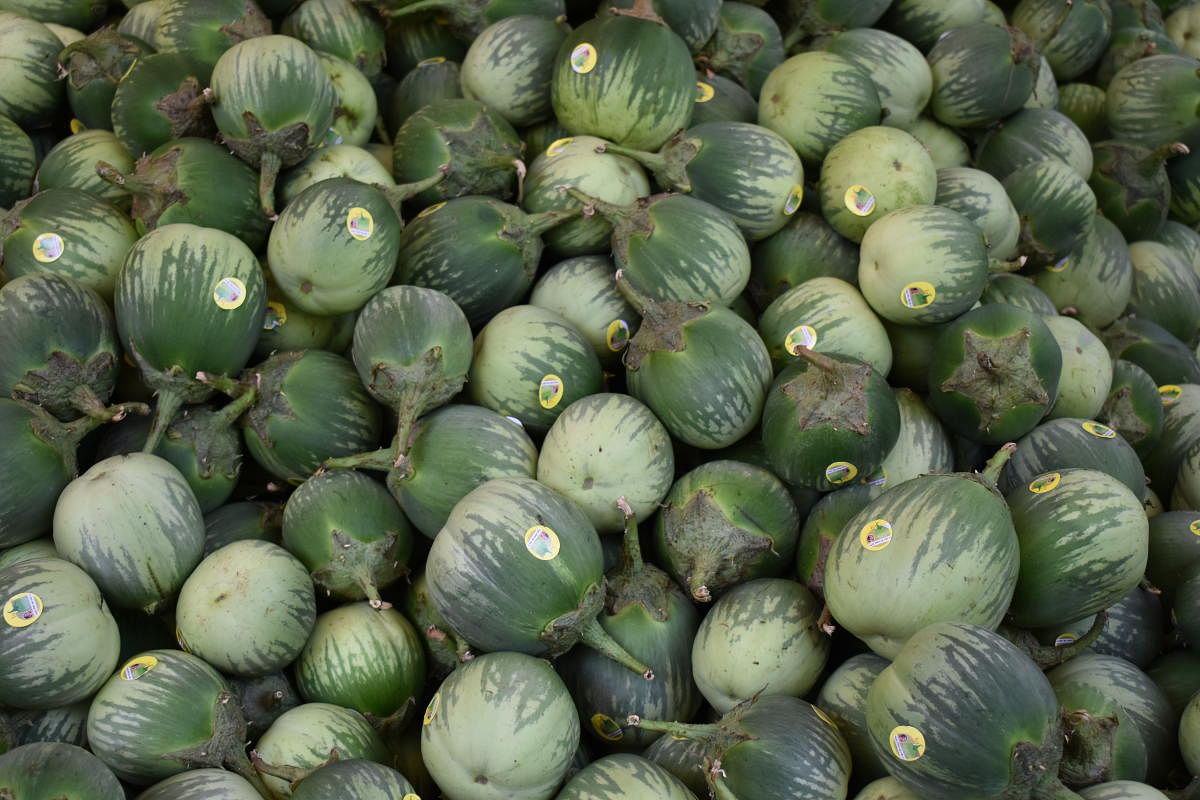

Mattu Gulla is a brinjal variety grown only in the village of Mattu, located between the Udyavar and Pangala rivers in Udupi district.
Green, round and edged with a thorned juttu (hook), it’s known for its soft pulp with small seeds and unmatchable taste.
The story began in 2009, when a Bt push throughout the Gulla-growing areas endangered the original gene pool of the vegetable. The agriculture department had a surveillance and then had an awareness campaign in the areas against bio-contamination.
Thanks to the united struggle and concerted effort by the Gulla growers that followed for over 10 years, the vegetable now is likely to reach international markets.
The vegetable is Mattu’s only crop that has fetched the villagers their livelihood ever since Sode Vadiraja Swami of Udupi Ashtamutt gave a bagful of seeds to the farmers 450 years back, as it’s widely believed.
“Our crops did suffer a great extent due to cross-pollination. Between 2009 and 2014, the crops got all sorts of pest infestations from leaf cutters and white fleas, which rob the plants just in time for harvest.
Thanks to the fight organised by the Mattu Gulla Belegarara Sangha, aided by scientists and environmental activists like late M N Madhyastha, it got the geographical indication tag a decade back, which was also a setback for the Bt brinjal in Karnataka,” said Lakshman Mattu, CEO of the Mattu Gulla Growers’ Sangha.
“We knew that only an official stamp of geographical indication could give more teeth to the efforts of the farmers. Luckily, M N Madhyastha and nutrition specialist Ramesh Bhat took leadership in this movement and studied why Gulla deserved the tag,” said Parameshwar Adhikari, a farmer leader.
Farmers, saviours
The Mattu Gulla Growers’ Sangha was born to give legitimacy to the struggle of saving the original gene of the vegetable. During the great contamination, many farmers discontinued cultivation, but they also fought it by keeping their fields fallow for a season or two; they had to recondition the soil and sanitise it by burning the crops down.
Traditional farmers like Sharada Poojary and Sanjeeva recalled, “We had stopped using all seeds, fertilisers and pesticides. My husband and I plucked out every plant from our farm and burned them. If we had not, the strains of contamination would have come back,” Sharada said.
The Sangha stood like a rock in support of the farmers.
Mattu Gulla, also known as Vadiraja Gulla, was a fit case for conservation of genetic purity. The Mattu Gulla-growing area extents to about just 750 acres, but it has been reduced by 50 per cent due to many factors including labour. Department officials and farmers swear
to bring more land for Mattu Gulla cultivation.
The season of Mattu Gulla extends from October to May, and has a potential yield of 1,800 tonnes. There are only 250 families of growers in this village, but only 98 cultivate Mattu Gulla with two crops yielding 1,000-1,200 tonnes annually.
Factually speaking
The most important bio-info about Mattu Gulla is that it grows in marshy lands, and local resource persons contend that the plant can absorb nitrogen in the atmosphere and convert it into amonia, which becomes the basic fertiliser for growing Gulla in Mattu.
The findings during 2006, made by Richard Bardgett and his colleagues from the University of Lancaster and British Institute of Grassland and Environmental Research, also support this contention. Thus, the practice followed by the farmers in growing Mattu Gulla stands scientific scrutiny, says nutrition specialist Ramesh V Bhat, in a paper on the vegetable.